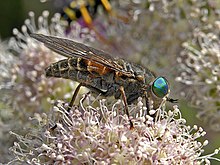
Tabanus bromius, sometimes called the band-eyed brown horsefly, is a species of biting horseflies.

Tabanus cordiger also known as the plain-eyed grey horsefly is a species of biting horse-fly.

Tabanus glaucopis, also known as the downland horsefly, is a species of biting horse-fly.
Tabanus miki also known as the plain-eyed brown horsefly is a species of biting horse-fly.
Tabanus spodopterus also known as the black horned giant horsefly is a species of biting horse-fly. It is widespread in Europe, but only one doubtful specimen has been found in the United Kingdom.
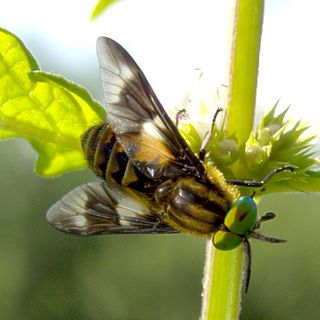
Superfamily Tabanoidea are insects in the order Diptera.
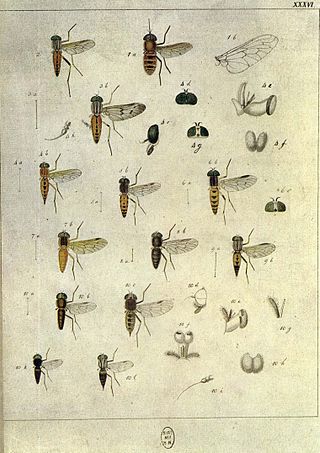
Pangonius is a genus within the horse-fly family (Tabanidae), often misspelled as Pangonia; Latreille originally published the name as Pangonius in 1802, emending it in 1804 to Pangonia, but the emendation is not valid under the International Code of Zoological Nomenclature. Some species that were earlier placed in this genus are now in the genus Philoliche.

Hybomitra aterrima is a species of horse flies in the family Tabanidae.

Tabanus quatuornotatus is a species of biting horse-fly.
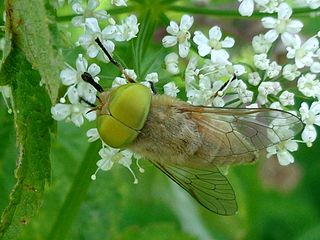
Atylotus fulvus is a species of 'horse flies' belonging to the family Tabanidae.
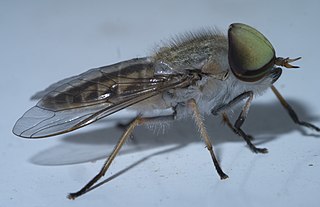
Tabaninae is a subfamily in the family Tabanidae commonly known as horse flies. There are more than 3000 described species in Tabaninae.

Hybomitra bimaculata is a Palearctic species of horse fly in the family Tabanidae.
Hybomitra expollicata, also known as the striped horsefly, is a Palearctic species of horse fly in the family Tabanidae.
Hybomitra solstitialis is a Palearctic species of horse fly in the family Tabanidae. Continental authorities apply the name solstitialis to the coastal species Hybomitra ciureai of British authorities and regard British solstitialis as var. collini of Hybomitra bimaculata.
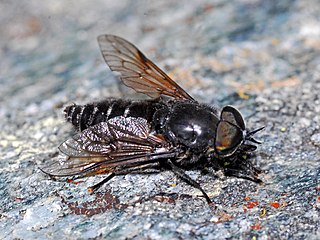
Dasyrhamphis is a species of 'horse fly' belonging to the family Tabanidae subfamily Tabaninae.

Hybomitra caucasica is a species of horse flies in the family Tabanidae.
Scione is a genus of flies in the family Tabanidae.

Chrysopsini is a tribe of horse and deer flies in the family Tabanidae.
Pseudacanthocera is a genus of horse flies in the family Tabanidae.
